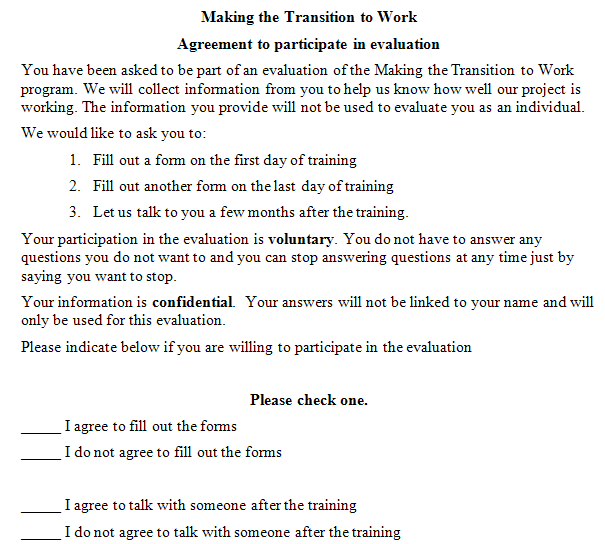My name is Jennifer Sullivan Sulewski, Research Associate at the Institute for Community Inclusion, University of Massachusetts Boston. Most of my research and evaluation work has focused on improving employment and postsecondary education outcomes for people with disabilities. I am co-chair of AEA’s Disabilities and Other Vulnerable Populations (DOVP) TIG and co-author of the Universal Design for Evaluation Checklist. I have also had the pleasure of serving as curator for the DOVP Week.
There are two major Universal Design schools: one is broadly applied and the other specifically to curriculum and learning. Both can help inform evaluators and ensure accessibility for all evaluation participants. Each of this week’s posts focuses in on the concepts of Universal Design (UD)or Universal Design for Learning (UDL).
Hot Tip:
- UD is “the idea that all new environments and products, to the greatest extent possible, should be usable by everyone regardless of their age, ability, or circumstance” (Center for Universal Design). The seven principles of UD are:
- Equitable Use
- Flexibility in Use
- Simple and Intuitive Use
- Perceptible Information
- Tolerance for Error
- Low Physical Effort
- Size and Space for Approach and Use
- UDL is “a set of principles for curriculum development that give all individuals equal opportunities to learn” (National Center on Universal Design for Learning). The three principles of UDL are:
- Multiple Means of Representation
- Multiple Means of Action and Expression
- Multiple Means of Engagement
Lesson Learned:
- Evaluation recruitment materials and informed consent must be accessible for authentic and ethical participation. In our Universal Design for Evaluation checklist, we demonstrate the importance of Principle 1: equitable use, particularly as it applies to the informed consent process. In my work with people with intellectual/developmental disabilities, I’ve learned how important it is to create recruitment and informed consent materials that are designed to be used and understood by all. For example, in an early project I had separate consent forms for different aspects of the project, and the need to sign multiple forms was confusing for participants. I learned to explain all the expectations and rights of participants in one simple form instead.
- Here is an example of such a consent form:
- It is also essential when working with this population to understand whether the participants are under someone else’s guardianship; if they are, consent must be obtained from the guardian and assent from the individual.
In the posts to follow, John Kramer discusses how to apply UD Principle 3 to increase access and stakeholder participation. David Bernstein describes applying Principles 3 and 7 to an evaluation involving Deaf-Blind program participants. June Gothberg demonstrates Principles 2 and 4 on flexible and perceptible information. Bob Hughes provides tips on evaluating UDL projects and Don Glass explores the use of UDL to guide the design and evaluation of curriculum, programs, and materials.
Rad Resource:
- Looking for ideas on how to make your project more accessible to people of all backgrounds and abilities? The Universal Design for Evaluation Checklist is a resource for applying the seven principles of Universal Design to evaluation.
The American Evaluation Association is celebrating the Disabilities and Other Vulnerable Populations TIG (DOVP) Week. The contributions all week come from DOVP members. Do you have questions, concerns, kudos, or content to extend this aea365 contribution? Please add them in the comments section for this post on the aea365 webpage so that we may enrich our community of practice. Would you like to submit an aea365 Tip? Please send a note of interest to aea365@eval.org. aea365 is sponsored by the American Evaluation Association and provides a Tip-a-Day by and for evaluator.


I love the consent form! Unfortunately, it would never fly with our IRB because it does not include risks and benefits. Have you run into that issue before?
Tamara – unfortunately, yes, I have. The form above was approved by our IRB a few years ago, but I’m not sure it would get through our current IRB. That said, the idea of using simple language to explain what you mean can be carried through to the risks and benefits section as well. Here is some example text from another consent form I’ve used with people with intellectual disabilities:
Benefits of the study:
By sharing promising practices, we hope to help DDS and others support more people with disabilities to get and keep jobs.
Risks or Discomforts:
This project is of minimal risk. That means that there is nothing dangerous about participating. The only real risk that may arise is negative or upsetting feelings when talking about your experiences with DDS or with looking for a job. You may discuss any bad feelings about the interview with Jennifer Sulewski (information on next page) or the person who is interviewing you. There is also a very small risk of someone learning what you told us, but we are trying to protect your identity by keeping all files in a locked file cabinet or computer drive where only project staff will have access to them.
What are my rights regarding this interview?
You have the right to ask questions about the project before you sign this form. You can also ask questions at any time during or after the interview. You have a right to not answer any question you do not want to answer. You also can end the interview at any time and nothing bad will happen to you. You also have a right to ask not to be recorded and still participate in the interview.
Jen
Pingback: DOVP Week: Don Glass on Applying Universal Design for Learning (UDL) to Evaluation · AEA365